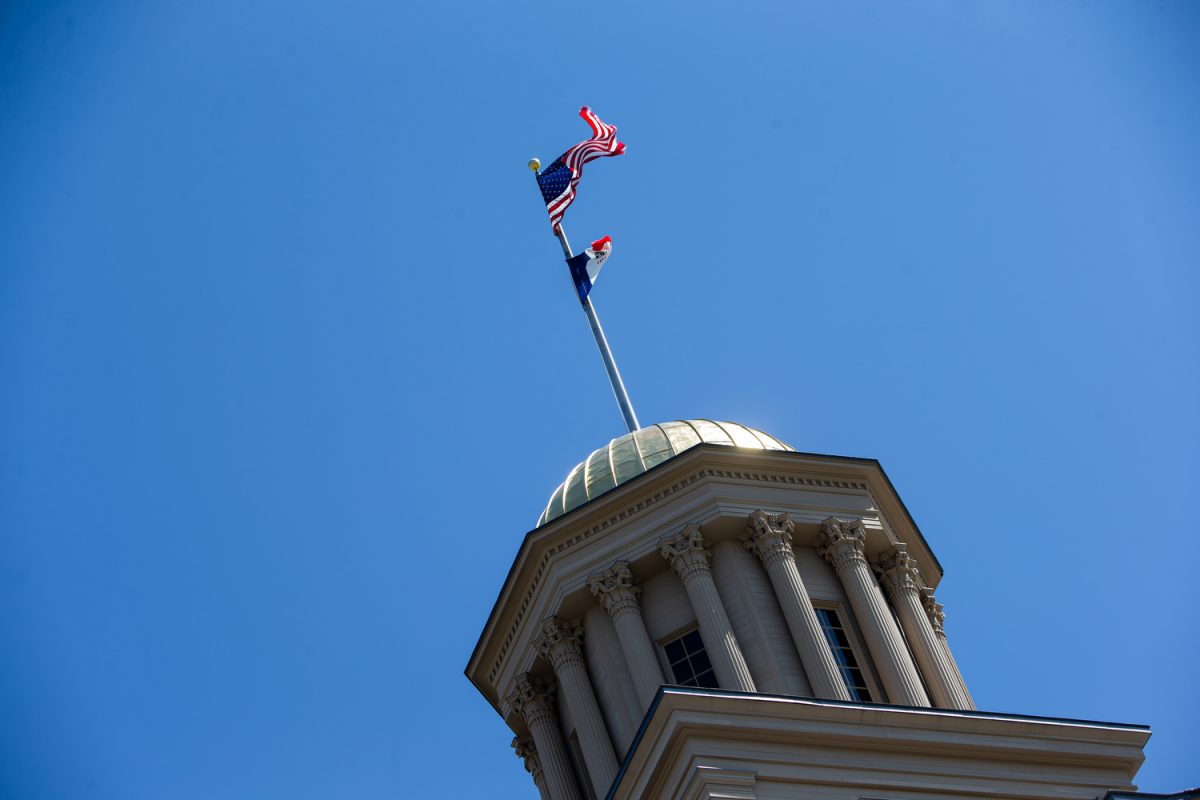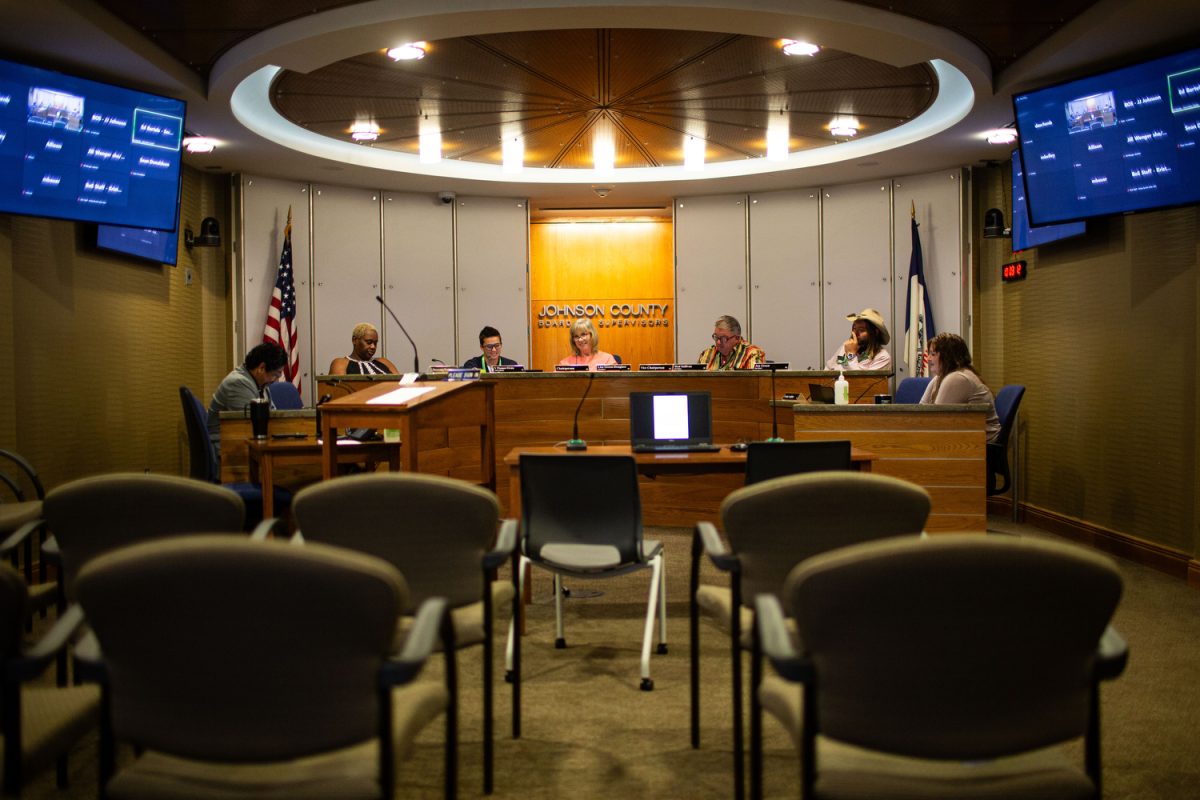What is a Tigerhawk? Everyone recognizes the simple outlined sketch as a symbol encompassing everything Hawkeye. But not everyone knows the story behind the logo. Since being implemented 38-plus years ago, the Tigerhawk grew from being a hopeful whim for a struggling football team to an icon for generations of people throughout the world.
The story, as told by the man who designed it
In 1979, two very different football teams were in the spotlight for two VERY different reasons.
The Pittsburgh Steelers dominated the NFL, winning three Super Bowls in a 10-year span against teams chock-full of Hall of Fame talent.
Meanwhile, the Iowa Hawkeyes were on a different trajectory: they had endured 17 seasons without a winning record during the tenures of four head coaches. For context, under the previous coach to the four, Forest Evashevski, the Hawkeyes won two Rose Bowls in three seasons (1956-58) and tied for first in the Big Ten in Evy’s last season (1960).
In 1979, Iowa football head coach Hayden Fry entered his first season in Iowa City. He was just the latest in a string of hopeful hirings in an attempt by then-Athletics Director Bump Elliott to build the team back to respectable status. The strategy on the field needed plenty of work, but so did the team’s look, if Fry and Company wanted to convey a winning image.
RELATED: A look back: The Hawkeyes and the Rose Bowl
Fry was fully aware his newly acquired college team shared the black and gold colors with the reigning NFL champions. He reached out to “Mean” Joe Greene, the all-everything defensive tackle for the Steelers who had played for North Texas State, the school Fry had just left. Greene talked to the Rooney family, owners of the Steelers, and they sent Fry a replica of the NFL uniforms as a design base for the Hawkeyes’ potential new look.
Iowa’s former gold helmets were discarded for the new black helmets that featured a gold stripe down the middle. Now, all Fry needed was a logo.
Enter Bill Colbert and Chuck Edwards.
Colbert of Three Arts Advertising, based in Cedar Rapids, had previously done pro bono work for the UI. Along with Edwards, a printer from the area, he designed schedule posters for both the football and basketball teams.
One day, former Sports Information Director UI George Wine contacted Edwards about the advertising team submitting a design for a logo.
And the project took off.
The Tigerhawk is born
The idea for the iconic symbol originated on a plane when Colbert traveled back from an advertising convention in Atlanta. On previous posters, he used a red-tail hawk as the Iowa Hawkeye, and he wanted to incorporate a simplified version of the head.
The ’70s were known for simplicity of design (Think: the Nike Swoosh, created in 1971). It was a movement away from complicated advertising, making logos applicable in different settings and flexible for television. The Tigerhawk was a unique take from the posters Colbert had drawn before. With the help of Edwards, the design moved from just a sketch to a legitimate helmet decal.
In the armory building (part of the Field House) that housed the coaching offices, Colbert and Edwards put two helmets, black with the newly designed bright yellow logo, on the table and talked with both Fry and Wine.
“You know, I really kind of like that splash of sunshine,” Colbert recalled Fry saying.
And that was that. The men shook hands and adjourned the meeting.
When Colbert returned to his office that afternoon, he had a message from Wine. Fry was interested in the design, and they wanted to move on it.
The icon
The Hawkeyes’ first two years bearing the Tigerhawk were not winning seasons, but starting in 1981, Fry and Company saw a resurgence in performance.
The team began to turn around in the 1981 season, when Fry led the Hawkeyes to an 8-4 finish, tying for first place in the Big Ten.
With that finish, the Tigerhawk made a major appearance on the national stage in Pasadena, California, at the Rose Bowl — Iowa’s first appearance since 1959.
Now, almost 40 years later, The Tigerhawk has come to represent the change that took place during Fry’s years as head coach, and it holds a standard of respect not just in Iowa City, but throughout the state, country, and the world.
Those who make the trip to Kinnick Stadium can now view the logo and all it signifies on the 50-yard line of the turf, added in the summer of 2017.
“It relates to success,” Colbert said of the design he helped create.
Around the world
In 2009, during a celebration for the 30th anniversary of the logo, a young Army veteran approached Colbert. The veteran described a rock with the Tigerhawk drawn on it outside the barracks where all the men from Iowa met at night to talk about home.
That outreach wasn’t a singularity for the Tigerhawk. Colbert has seen the logo in Tokyo, Italy, and all over the world.
“Hawkeye fans everywhere are not shy,” head volleyball coach Bond Shymansky said. “When they see another Hawkeye, they all yell, ‘Go Hawks,’ which is a really great rallying cry when you’re in random places all around the world. It’s something that I think we’re all proud to identify with.”
Representing the Tigerhawk, even at Big Ten rival schools, is a privilege from any position.
“I love competing in an Iowa singlet. It’s obviously one of the coolest feelings I’ve ever been through,” freshman wrestler Spencer Lee said. “I wlove doing it every single time, and I’m going to enjoy it the next three to four years.”
It’s not just about football anymore
Colbert recalled that about six months ago, he sent Fry a card telling him that one of the biggest thrills of his life was sitting in that conference room presenting the helmet.
Colbert himself is a die-hard Hawkeye fan. His father grew up in Iowa City; his whole world was ingrained in the culture.
“I think my dad would have been proud of that,” Colbert said. “He was quite the Hawkeye fan, and that’s where I really got my Hawkeye tradition.”
The consistency of the Tigerhawk is something that connects generations of families and will continue to do so in years to come.
“It’s a symbol of years you spent past,” Colbert said. “It ties people together, it’s always done that.”












